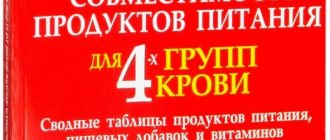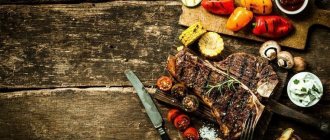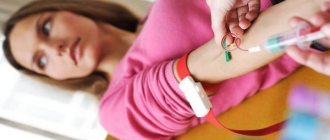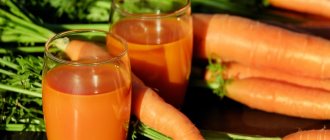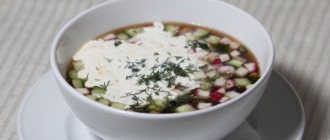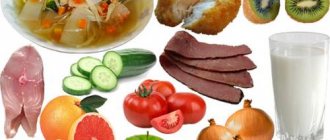Supermodel Miranda Kerr has already experienced the effectiveness of the blood type 3 diet. What do you want? Find out why you are lucky with your blood type and what you need to eat to lose weight and avoid many diseases!
Author: Kristina Lobanovskaya, doctor, practicing nutritionist Article updated: 11/09/2020
Americans James D'Adamo and his son Peter D'Adamo, engaged in research in the field of naturopathy, created a dietary method according to which choosing foods based on blood type helps improve health and achieve an ideal weight. Famous supermodels Natalia Vodianova, Miranda Kerr and actor Matthew Perry tried this nutrition system on themselves. The blood group 3 diet is suitable for every fifth inhabitant of the planet - according to statistics, it is precisely this number of people whose red blood cell antigen characteristics correspond to category B (III).
This dietary method is not short-term and does not provide rapid weight loss. Judging by the reviews, tangible results can be seen no earlier than two months, and the recommended duration of the full course is at least six months.
Principles and rules of the diet for 3 positive blood group
The blood type diet (3 positive) for weight loss is based on the consumption of foods of a certain category. According to the theory, the ancestors of people with B(III)Rh+ were nomads, so the diet of carriers may contain products of completely different categories. Patients with positive blood group 3 are characterized by stable immunity: they quickly adapt to new climatic conditions.
It must be remembered that people with B(III)Rh+ are often prone to overeating. They suffer from chronic fatigue and are susceptible to:
- pathologies of the central nervous system;
- autoimmune diseases;
- pathologies of viral etiology.
Patients with positive blood type 3 have a high risk of developing diabetes mellitus, so during the diet you should try to completely exclude sweets containing sweeteners from the diet.
Compliance with the basic rules of the methodology is mandatory. These include:
- regular calorie counting (women 1600 kcal, men 2000 kcal);
- complete rejection of fried, salty, sour and spicy foods;
- eating raw vegetables (cooking them is not recommended);
- compliance with the drinking regime (per day - at least 1.5 liters);
- the presence in the diet of foods that can speed up metabolism (greens, dairy products);
- presence of physical activity.
When consuming foods high in calories, it is necessary to increase physical activity. In this case, the minimum daily volume of liquid should be 2 liters.
A healthy eating system involves partial avoidance of foods that contribute to:
- weight gain;
- decrease in insulin levels;
- slowing down metabolic processes.
It is not recommended to include nuts and corn grains in your diet. They promote fluid retention in the body. The diet cannot be considered a rapid weight loss system. It is rather a healthy eating technique.
Physical activity for people with blood group 3+
Psychological harmony and proper physical activity are the keys to success for people trying to lose weight. Basically, sports that combine relaxing techniques and intense exercise are suitable for this blood type:
- Walking;
- Yoga;
- Swimming;
- Elliptical trainer;
- Exercise bike;
- Tennis;
- Treadmills.
Photo on Unsplash
Advantages and disadvantages
The technique has a number of advantages and disadvantages. The advantages include:
- uniform, gradual weight loss, which helps prevent the appearance of stretch marks and sagging skin;
- a lasting effect is ensured by restoring metabolic processes, so the diet is considered not only safe, but also a healthy nutritional system;
- an extensive list of permitted products, which allows you to create the most varied menu.
The disadvantage is considered to be the need for responsibility and discipline when preparing a diet. Also, the disadvantages include possible contraindications.
Features for children, elderly, pregnant women
The blood type diet (3 positive) for weight loss requires caution. It can be followed by pregnant women, elderly patients and teenagers. It is important to make your diet as balanced as possible in order to be able to control weight gain during pregnancy.
It is also necessary to pay attention to the quality of the products. During the diet, pregnant women are prescribed to consume seasonal fruits, vegetables and mineral complexes.
The preparations must contain:
- magnesium;
- folic acid;
- iron;
- calcium;
- iodine.
The emphasis should be on foods containing large amounts of dietary fiber. They stabilize intestinal function. In addition to counting calories, it is necessary to find out the ratio of proteins, fats and carbohydrates in each dish. To prevent swelling, a woman should drink 1.5 liters of fluid per day.
The diet will be useful for teenagers prone to excess weight. The method does not imply strict restrictions; the child can eat all foods from the list of permitted foods, but in small quantities. The diet should contain lean meat, fish, dairy products, fresh fruits and vegetables.
Elderly patients may require slight menu adjustments. The first and second courses are prepared with the addition of cereals in a weak chicken or vegetable broth. To enhance the fat burning process, soups, salads and casseroles can be omitted.
Basic principles of diet depending on blood type:
First group
People with blood type 1 are called “hunters”. They can eat any meat (with the exception of pork), fish, seafood, vegetables and fruits, and rye bread. It is recommended to avoid Chinese and white cabbage, corn and wheat products, tangerines, and coffee.
Second group
They are called "landowners". Legumes, fermented milk products, tofu, pineapples, soy milk, and freshly squeezed juices (cherry, pineapple, carrot, grapefruit) are good for them. It is better to avoid meat, sugar, butter, bananas, peppers, ice cream and some other products in group 2 positive with negative Rh.
Third group
These are “wanderers-nomads”. They are recommended to eat beef, cereals (except buckwheat and millet), dairy products, fruits, eggs, vegetables (except tomatoes). Seafood, chicken, pork, corn, olives and peanuts should be avoided.
Fourth group
For blood group 4, the list of products is the most extensive. You can eat almost everything except bacon, corn, and buckwheat. Nuts, fish and meat are considered the most useful.
What is included in the diet?
The food basket during the blood group 3 diet is quite varied. The menu may contain dairy and meat products, cereals, eggs, lean fish, mushrooms, vegetables, fruits and legumes. When losing weight, it is not recommended to abuse the meat and eggs of waterfowl, fish caviar, mollusks and crustaceans. The amount of seeds and nuts previously consumed should be reduced.
Cereals can be consumed, but in small quantities. Experts advise abandoning ready-made sauces, replacing them with spices. You can add fresh herbs to first and second courses, salads and appetizers. For dressing use oil and lemon juice. During the diet, the patient can drink a little white or red wine. According to reviews, the body quickly gets used to the new regime, so side effects rarely occur.
List of approved products
The blood type (3 positive) diet for weight loss includes almost all types of meat. The basis of the diet is fresh vegetables and fruits.
Dishes can be prepared with the addition of spices:
- horseradish;
- curry;
- cayenne pepper.
During the diet, you can eat venison, rabbit and lamb, and beef liver.
The list of permitted seafood and fish includes:
- black caviar;
- flounder;
- salmon;
- hake;
- cod;
- halibut;
- pike;
- sardines;
- sea bass;
- haddock;
- sturgeon;
- mackerel.
2-3 times a week you can eat 1 boiled egg for breakfast or lunch.
Permitted products include grain crops and products made from them:
- oats;
- millet;
- rice;
- rice cakes;
- millet bread;
- rice or grain breads.
The presence of dairy products in the diet is mandatory. During the diet you can eat:
- yogurt;
- kefir;
- homemade cheese and cottage cheese;
- goat or sheep milk cheese;
- skim cow's or goat's milk.
Legumes (lima beans, black beans, red soybeans) are added to main courses.
The list of permitted vegetables and herbs includes:
- hot pepper;
- beet leaves;
- parsnip;
- parsley;
- eggplant;
- sweet potato;
- beet;
- green, yellow bell pepper;
- Chinese cabbage, red cabbage, collard cabbage, broccoli, cauliflower, white cabbage, Brussels sprouts.
It is acceptable to eat plums, pineapples, papaya, bananas, cranberries and grapes. Freshly squeezed juices may also be present in the diet.
Neutral foods do not have any effect on the digestive process. The diet may include:
- meat products (beef, veal, turkey, pheasant);
- seafood and fish (scallops, squid, herring, catfish, steak, croaker, yellow and silver perch, rainbow trout, tuna, carp);
- nuts (chestnuts, hazelnuts, pine and walnuts, almonds, pecans);
- grain products (oat bran, soy, rye, spelled bread);
- dairy products (hard cheese, butter, whey, cow's milk);
- oil (linseed, olive);
- vegetables and herbs (celery, ginger, daikon, fennel, horseradish, garlic, onion, red, onion, leek, shallot, potato, asparagus, turnip, pumpkin, zucchini, rutabaga, dill);
- berries and fruits (figs, kiwi, mangoes, peaches, apricots, raspberries, strawberries, strawberries, blackberries, currants, pears, apples, blueberries, cherries, lingonberries, melon, watermelon, lemon, grapefruit, orange, tangerine).
Dried fruits may be present in the diet. The consumption of prunes, dried apricots, raisins and dates is allowed in small quantities.
List of prohibited products
It is necessary to exclude from the diet:
- meat and meat products (quail, partridge, duck, chicken, pork);
- fish and seafood (clams, octopus, crabs, crayfish, snails, anchovies, lobsters, beluga, rock bass, eel, sea pike).
You should not eat blue or processed cheese. You need to completely give up ice cream. Cereals (shiritsa, corn, rye, barley, wheat) and products made from them (rye, wheat bread) are also prohibited.
Do not consume sesame, sunflower, peanut, corn and cottonseed oil. The list of prohibited products also includes:
- spices (barley, malt, almond extract, white and black pepper, corn starch, cinnamon, gelatin, allspice);
- fruits (starfruit, pomegranate, coconut, persimmon);
- ready-made sauces (mayonnaise, cream, garlic, tartar, mushroom, cheese, sour cream, bechamel);
- vegetables (rhubarb, olives, tomatoes, soybeans, pepo pumpkin, Jerusalem artichoke, artichokes, avocado);
- legumes (lentils, radiata, spotted beans, lamb and cow peas, black beans).
You need to give up sesame seeds, peanuts, cashews, flax seeds and sunflowers.
Drinking regime
The blood type diet (3 positive) for weight loss requires compliance with the drinking regime. In the process of losing weight, water plays an important role: when fluid enters the body, a signal is sent to the brain centers responsible for hunger and thirst, and the person temporarily stops feeling hungry. With a lack of moisture, the risk of dehydration is quite high. The condition negatively affects the patient’s well-being: he complains of fatigue and dizziness.
Most metabolic processes take place in an aquatic environment. Non-carbonated mineral water accelerates the process of breaking down food, converting carbohydrates into energy. If you follow a drinking regime, there is an accelerated production of hormones responsible for the release of fat cells from the subcutaneous layer. Water also provides nutrition to cells, carrying minerals, trace elements and vitamins to internal organs.
During the diet, the following drinks are allowed:
- beer;
- white, red wine;
- apricot, citrus, vegetable juices;
- black tea, decaffeinated coffee.
You can drink infusions and decoctions based on:
- dandelion;
- St. John's wort;
- alfalfa;
- strawberry leaves;
- valerian;
- thyme;
- verbena;
- chamomile;
- echinacea;
- hawthorn;
- yarrow;
- elderberries.
Also, while losing weight, you can take decoctions based on rose hips, ginseng, sage, licorice root and peppermint. Juices are prepared from cabbage, grapes, papaya, pineapple and cranberries.
The list of prohibited drinks includes:
- tomato juice;
- infusion based on hops, aloe, fenugreek, red clover, coltsfoot, linden, senna, corn silk.
With sufficient fluid intake into the body, the process of removing waste, toxins and salts occurs faster. It is strictly forbidden to drink strong alcoholic drinks (vodka, cognac, brandy, absinthe, moonshine, fortified wines).
Recommendations for proper nutrition
- For those who want to lose weight, under no circumstances should they eat corn, peanuts, wheat and buckwheat; they contribute to excess weight gain by reducing insulin production, retaining fluid in the body and slowing down the metabolic process. All this has a very bad effect on the functionality of the gastrointestinal tract.
- Carriers of the third positive blood group can often include various meat and egg dishes, sea fish, rabbit meat and lamb in their daily diet. It is advisable to exclude seafood, except sea fish, from the diet, as well as sunflower oil, corn and chicken.
- Tomatoes and pomegranates are extremely undesirable for consumption, because they contribute to the occurrence of gastritis of the stomach. Lean meat should form the basis of the diet of a person who wants to lose weight. To improve digestion, you need to eat as many greens as possible. The exception is spinach, which increases gas formation in the body.
- Soybeans and legumes are a must for daily nutrition. The most preferable cereals are oatmeal and rice. Low-fat fermented milk products will be very useful; it is advisable to consume them daily. Of the drinks, the most beneficial are considered to be decoctions of licorice, raspberries and ginseng; you are allowed to occasionally drink coffee in small quantities. Eliminate completely - soda, tomato and pomegranate juice and linden tea.
- Vitamin complexes are required for the overall strengthening of the body. Particular attention should be paid to magnesium, lecithin and the digestive enzyme bromelain. You can also use tincture of echinacea and licorice.
Healthy foods
- Meat: rabbit, venison, lamb, mutton.
- Dairy and fermented milk products: goat and sheep cheese, homemade cheese, homemade cottage cheese, kefir, yoghurts, goat milk.
- Cereals : rice, millet, oats.
- Vegetables: beets, green and yellow peppers, eggplant, cauliflower and Brussels sprouts.
- Seafood: black caviar, sardine, flounder, mackerel, cod, salmon, sea bass.
- Fruits and berries: pineapple, bananas, plums, grapes, cranberries.
- Legumes : lima beans, dark beans, red soybeans, vegetable beans.
- Spices : cayenne pepper, horseradish, parsley, curry, ginger.
- Drinks: juices of cabbage, grapes, pineapple, cranberries; green tea.
These are not just healthy products, but fat burners - products that break down fats, due to the fact that the body requires much more energy to digest such products than they bring into the body.
Harmful products
- Meat : duck, pigeon, beef heart, horse meat, ham, partridge, bacon, chicken, black grouse, quail, offal, hazel grouse, guinea fowl.
- Dairy: cheese and ice cream.
- Eggs : duck, quail, goose.
- Cereals : amaranth, buckwheat flour, couscous (crushed wheat groats), buckwheat groats and flakes, corn flakes, popcorn, corn, rye flour, wild rice, tofu, wheat flour and products made from it, sorghum, wheat bran.
- Seafood: anchovy, Arctic char, rainbow and brook trout, barracuda, oysters, beluga, snails, gastropods and bivalves, eel, rock and striped bass, crab, octopus, lobster.
- Legumes : red and green lentils, black beans, black beans, chickpeas, chickpeas, tempeh, soy cheese and milk.
- Fruits: persimmon, avocado, prickly pear, pomegranates, coconut, melon.
- Nuts and seeds : hazelnuts, peanuts and peanut butter, pistachios, pine nuts, tahini, cashews and cashew butter, pumpkin seeds and pumpkin seed butter, poppy seeds, sunflower seeds and butter, sesame seeds.
- Vegetable oil : cottonseed, peanut, soybean, castor, rapeseed, coconut, sunflower, corn, borage, sesame.
- Condiments: tomato sauce, soy sauce, guarana, miso, gelatin, cornstarch, ketchup.
- Herbs and spices : allspice and ground pepper, juniper, cinnamon.
Contraindications for going on a diet
A healthy nutrition system has no absolute contraindications. It is prescribed with caution to people suffering from diabetes, diseases of the central nervous and circulatory systems. Chronic diseases of the gastrointestinal tract can be considered relative contraindications.
Anomalies of the pancreas:
- congenital hypoplasia;
- esophageal atresia;
- cystic fibrosis;
- ectopic pancreas.
Biliary tract pathologies:
- biliary dyskinesia;
- cholestasis;
- cholecystitis;
- cholangitis;
- postcholecystectomy syndrome;
- oncological diseases.
Patients suffering from urinoma, peritonitis, and mesadenitis may need to consult a gastroenterologist.
Also included in the list of relative contraindications are pathologies of the duodenum and stomach:
- ulcerative and erosive lesions;
- duodenitis;
- gastritis;
- functional disorders of the duodenum and stomach;
- esophagitis;
- echinococcosis;
- false and true cysts;
- intestinal tuberculosis;
- acute enteritis;
- systematic constipation.
People suffering from colic, brucellosis, dermatomyositis and helminthiasis may need dietary adjustments.
How much can you lose in a week, month?
The technique does not guarantee rapid weight loss. A healthy nutrition system does not imply strict restrictions. You can drink weak beer or wine several times a week. In 7 days on a diet you can lose 3-4 kg, in a month – 10-14 kg. To speed up the fat burning process, it is necessary to reduce the amount of light carbohydrates entering the body with food.
It is recommended to completely avoid sweet carbonated drinks, giving preference to freshly squeezed juices and decoctions based on medicinal plants. Fast food, potato chips, snacks and fast food should be excluded from the diet. It is necessary to reduce the amount of sugar-containing drinks and flour products.
Sample menu for the week
A blood type diet for weight loss should be as varied as possible. People with 3 positive are practically “omnivores”. Despite the absence of strict restrictions, you need to pay attention to the method of cooking. Products from the permitted list are boiled, baked and stewed with the addition of spices or vegetable oil. Vegetables can be sautéed. Frying and deep frying should be ignored.
Diet for blood group 3 positive
Sample menu:
| Days of the week | Eating | Time of receipt | Sample menu | Portion weight |
| Monday | Breakfast | 08.00-08.30 | Semolina porridge with milk with raisins or prunes, rice bread with jam. | 150-200 g |
| Lunch | 10.00-10.30 | Freshly squeezed peach juice, oatmeal cookies. | 150 g | |
| Dinner | 13.0013.00 | Fish soup with pearl barley, boiled cauliflower salad with homemade mayonnaise. | 200-250 g | |
| Afternoon snack | 15.30-16.00 | Low-fat yogurt with fresh berries (raspberries, blackberries). | 150 g | |
| Dinner | 18.00-18.30 | Fish fillet with bell pepper and zucchini in foil, with a side dish of brown rice. | 200-250 g | |
| Tuesday | Breakfast | 08.00-08.30 | Oatmeal porridge with honey, cottage cheese without sugar. | 150-200 g |
| Lunch | 10.00-10.30 | Pear, grapefruit or orange. | 150 g | |
| Dinner | 13.0013.00 | Cream soup with wild mushrooms and vegetables, beetroot and carrot salad. | 200-250 g | |
| Afternoon snack | 15.30-16.00 | Kefir, biscuits or oatmeal cookies, dried fruits. | 150 g | |
| Dinner | 18.00-18.30 | Steamed turkey thigh with red beans, green pea and cucumber salad. | 200-250 g | |
| Wednesday | Breakfast | 08.00-08.30 | Cottage cheese with honey, low-fat kefir, grain bread. | 150-200 g |
| Lunch | 10.00-10.30 | Fresh fruit or fruit salad with yogurt. | 150 g | |
| Dinner | 13.0013.00 | Roast rabbit with mashed potatoes, Korean carrots with asparagus and dried eggplant. | 200-250 g | |
| Afternoon snack | 15.30-16.00 | Banana puree with raisins and cream. | 150 g | |
| Dinner | 18.00-18.30 | Zucchini stewed in sour cream with garlic and herbs. | 200-250 g | |
| Thursday | Breakfast | 08.00-08.30 | Steamed omelette of 2 eggs, fresh fruit, green tea. | 150-200 g |
| Lunch | 10.00-10.30 | Freshly squeezed juice, oatmeal cookies with cranberry jam. | 150 g | |
| Dinner | 13.0013.00 | Pea soup, steamed turkey fillet, canned bean salad. | 200-250 g | |
| Afternoon snack | 15.30-16.00 | Curd mass with honey and raisins, freshly squeezed orange juice. | 150 g | |
| Dinner | 18.00-18.30 | Steamed fish cutlets with a side dish of stewed vegetables. | 200-250 g | |
| Friday | Breakfast | 08.00-08.30 | Buckwheat porridge with water without sugar, fruit salad with yogurt. | 150-200 g |
| Lunch | 10.00-10.30 | Green tea, prunes or dried apricots. | 150 g | |
| Dinner | 13.0013.00 | Rice soup with potatoes and turkey, warm salad with seafood. | 200-250 g | |
| Afternoon snack | 15.30-16.00 | Low-fat yogurt with fresh berries. | 150 g | |
| Dinner | 18.00-18.30 | Lamb in foil with stewed mushrooms in cream. | 200-250 g | |
| Saturday | Breakfast | 08.00-08.30 | Sandwich with sheep cheese, low-fat kefir, fruit. | 150-200 g |
| Lunch | 10.00-10.30 | Freshly squeezed carrot juice with orange juice, oatmeal cookies. | 150 g | |
| Dinner | 13.0013.00 | Mushroom soup with potatoes and croutons, white cabbage and cucumber salad. | 200-250 g | |
| Afternoon snack | 15.30-16.00 | Black tea with lemon, cheesecakes. | 150 g | |
| Dinner | 18.00-18.30 | Ground turkey meatballs, vinaigrette with sauerkraut. | 200-250 g | |
| Resurrection | Breakfast | 08.00-08.30 | Fruit salad, berry jelly without sugar. | 150-200 g |
| Lunch | 10.00-10.30 | Tangerine and grapefruit juice, oatmeal cookies or grain breads. | 150 g | |
| Dinner | 13.0013.00 | Borscht with fresh cabbage, boiled turkey fillet. | 200-250 g | |
| Afternoon snack | 15.30-16.00 | Boiled egg, cheese sandwich. | 150 g | |
| Dinner | 18.00-18.30 | Steamed fish cutlets, mashed potatoes, cucumber and herb salad. | 200-250 g |
For breakfast, lunch and dinner you can eat 1-2 slices of bread. The first courses include croutons made from rye or wheat bread (no more than 50 g).
Physical activity
Physical activity during a diet contributes to additional calorie burning and strengthening muscle mass. Cardio exercises are recommended for people with blood type 3: running, walking, exercise on an exercise bike, treadmill, cycling, playing badminton, basketball, as well as yoga, shaping and Pilates.
Facts and myths
The rejuvenation process starts against the background of a reduction in the usual portions. When overeating, the body's defenses weaken, and a person becomes more vulnerable to diseases of viral and infectious etiology. The body quickly gets used to glucose, so the habit of regularly consuming sweets in large quantities develops in a person several times faster than addiction to substances of narcotic origin. These are scientifically proven facts that have an evidence base.
Blood type diets are surrounded by many “myths”. Many people mistakenly believe that carbohydrate-containing foods should be consumed separately from protein foods. The human body produces enzymes that can digest food in any combination.
The opinion that late dinner (after 18.00) leads to accelerated weight gain is also erroneous. The timing of meals does not affect the process of fat deposition. The theory about the need to consume large amounts of carbohydrates for weight loss is also considered erroneous. The diet should contain healthy carbohydrates found in greens, grains, fruits and vegetables.
Experts recommend following diets for positive blood group 3 for weight loss on a regular basis. This will not only control your weight, but also stabilize the process of food digestion. A healthy diet helps improve the rheological properties of blood.


